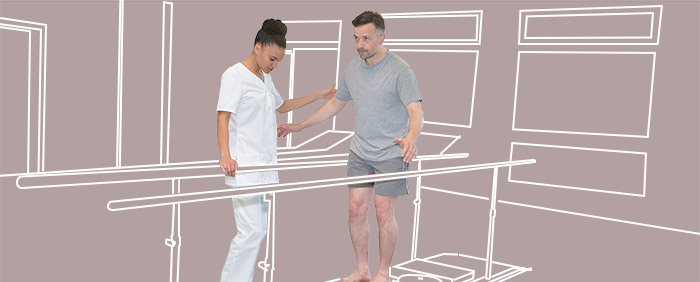Several years ago I had needed to seek the advice of UK doctors and physiotherapists to try to treat a long-standing knee complaint. My experience with these two different consultation approaches and their implications has stayed with me long afterwards. And in what I learnt from that journey I believe there are some lessons for the way we create innovation partnerships. Of course, doctors and physios do very different jobs, work under different pressures and treat very different conditions. And while I can only comment on my perception of the experience as a patient, rather than the medical value or outcomes, I hope my story is of some value to you.
Identifying the symptoms, not the source
I saw several GPs and a specialist. In the UK, GP doctors have a limited consultation time to see you – currently something like 10 minutes. They appear to have a standard approach to questioning defined by pathways and standards (take the history, form hypothesis 1, try test 1 etc, etc). These are designed to funnel you, via an assessment of your symptoms to a handful of potential diagnoses of your condition.
The approach is designed to rule out potential conditions via diagnostic tests (blood samples, scans etc) and to arrive at a proposal for your next step – a prescription for medication, a treatment plan or a referral to a specialist for you to repeat the process.
In this designed experience, the doctor is the expert with which we humbly consult to fix our problem. And, as we’ve seen in popular hospital dramas like House, this process can be complicated many times over when the doctor is presented with a combination of conditions or incomplete history.
In House’s words, when presenting complex and subjective conditions, unintentionally “everyone lies”.
During this same journey, I also worked with (rather than consulted) several physios. Despite the same complaints about the problem, it was a very different journey. The physio’s first appointment was deliberately longer than future sessions, allowing us to take the time to get to know each other, for them to get to know my body and my complaint and for us to try some activities together and see how they helped.
I left each session with a clear plan of action I needed to take (stretches, exercises) and occasionally a new tool of torture – a physiotherapy band, a roller etc. And then we’d meet regularly and work together on the injury, more activities and exercises – checking in and updating the plan based on the progress we were making. I noticed that, from my sessions with physios, they are rarely focused on the complaint itself.
At first, I thought they had misunderstood my issue, but I quickly learnt that by treating the whole-body we were building a foundation to not just ‘fix a problem’, but to make me stronger and more robust. Not just a single magic pill fix per se, but an entirely better me (however, I do still need to work on that core).
When I reflect on my experience of innovation, strategy and design consulting, it feels like the conventional approach I’ve witnessed is a visit to the doctors. Consultations based on a specific complaint. Proposals for a fixed course of treatment or further diagnosis. The consultant who sees themselves as the expert, the client as the patient. This conventional way of working seems inappropriate for the realities of strategic innovation today.
Shouldn’t potential partners invest the time to get to know each other first, not just a specific brief?
Shouldn’t we understand the wider business and strategic system, before treating a specific complaint?
Shouldn’t partners collaborate when tackling strategic issues?
I believe that only through close collaboration can we see what is working well, what isn’t and find the approaches that make the most difference. Only through this approach can we really make a ‘better you’, rather than fixing the symptoms on the surface.
So next time you are creating an innovation partnership, try a physio’s approach! How do you approach your pain points? Does your approach to innovation only address the immediate surface symptoms or the long-term company immune system to changing market trends and challenges? Either way, I’d love to hear your experiences!.
PS: While my personal experience was based on the UK health system (both NHS and privately), I can’t say how transferable these experiences are for US or European readers.

